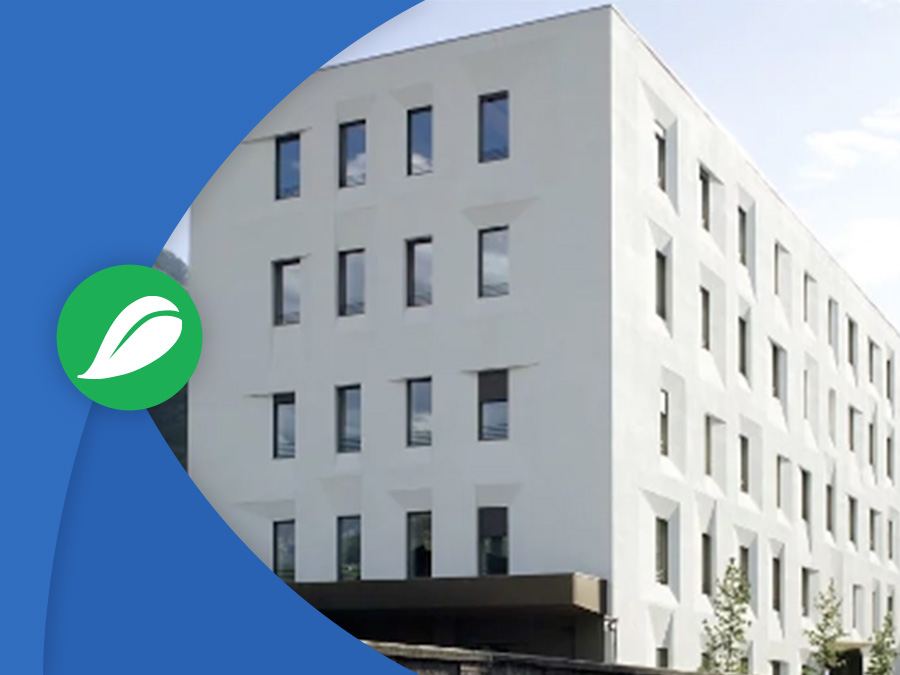Energy efficiency redevelopment is promoted in Europe through policies that encourage a "green" shift in the construction industry, which is crucial for environmental preservation, as well as human health and well-being.
A significant legislative effort has defined increasingly stringent efficiency parameters and more binding saving criteria, imposing adjustments to building stock to meet ever higher performance standards during the phases of design, construction, and operation.
Italy has significantly reduced its primary energy intensity since 1990 compared to the average of the 28 European Union countries.
The Integrated National Energy and Climate Plan (PNIEC), in line with Regulation (EU) 2018/1999, sets binding objectives for 2030 in terms of energy efficiency, renewable sources, and the reduction of CO2 emissions.
These objectives, along with the Paris Agreement, will allow Europe to achieve a climate-neutral economy by 2050.
The 2021-2030 PNIEC outlines five lines of intervention:
- Decarbonization
- Energy efficiency;
- Energy security;
- Development of the internal energy market;
- Research, innovation, and competitiveness
These will be integrated through legislative decrees to transpose European directives in 2020. They aim to reduce CO2 emissions by 56% in the industrial sector and 35% in the residential, tertiary, and transport sectors.
Italy aims to increase the share of energy from renewable sources in Gross Final Energy Consumption to 30%, reduce primary energy consumption by 43% compared to the PRIMES 2007 scenario, and reduce greenhouse gases by 33%.
Specifically, the projected contributions from renewables to total Gross Final Energy Consumption by 2030 are differentiated as follows:
- 55.0% renewables in the electric sector.
- 33.9% renewables in the thermal sector;
- 22.0% regarding the incorporation of renewables in transportation.

In Italy, nearly 40% of final energy consumption comes from buildings, and 3 out of 4 buildings lack sufficient energy efficiency
The average specific energy consumption index EPgl is around 170 kWh/m² per year, with an annual consumption of approximately 17 cubic meters of natural gas (or 17 liters of diesel) for every square meter of floor space.
The potential for energy efficiency improvements in buildings and their reduced environmental impact makes energy redevelopment an absolute priority.
This includes both management and technological interventions aimed at:
- Enhancing living comfort.
- Controlling energy consumption.
- Reducing emissions of pollutants into the atmosphere;
- Promoting the use of renewable energy sources over fossil fuels;
- Optimizing energy service management through advanced remote control systems, temperature regulation, and heat metering.
Energy redevelopment interventions, identified through energy diagnostics, affect both the structural and system components.
These diagnostics allow for the definition of:
- Improvement of the energy performance of the building envelope.
- Proper management of natural ventilation and passive cooling;
- Replacement of obsolete system components with more efficient ones;
- Installation of remote control systems and energy metering;
- Incorporation of renewable energy systems;
- Revision of contractual agreements related to energy services.
For opaque building envelope energy efficiency interventions related to external or uninsulated areas, it includes thermal insulation of:
- Flat or sloped roofs.
- Flooring slabs
- Perimeter walls and other thermal bridges
Efficiency improvements in transparent building envelope interventions include:
- Window and patio door replacements.
- Solar shading system replacements
- Thermal insulation and air sealing of casings
- Resolution of thermal bridges caused by window attachments to masonry.

System-related interventions involve enhancing the efficiency of system subsystems:
- Replacing or improving heat generators.
- Insulating distribution networks.
- Replacing heating devices
- Improving control systems
Heat generator replacement can involve installing:
- Condensing boilers of class A.
- Micro-cogenerators.
- Heat pumps integrated with photovoltaic, solar thermal, micro-wind, etc.
The potential energy savings from building envelope and system interventions can vary based on geographical location, construction type, existing systems, and the number and habits of residents.
It is possible to achieve the following savings:
- 30%-50% by insulating the building envelope.
- 10%-30% by replacing old boilers with more efficient ones.
- 10%-15% of electricity consumption through automation of high-efficiency devices.
Certified energy redevelopment under the CasaClima program, along with specific Energy Performance Contracts (EPCs), can achieve energy savings of over 70%. This requires:
- Energy diagnostics to identify the most efficient energy and economically sustainable improvements.
- Detailed architectural and energy design.
- Addressing all thermal bridges
- Installing innovative system components
- Efficient management of technological systems.

